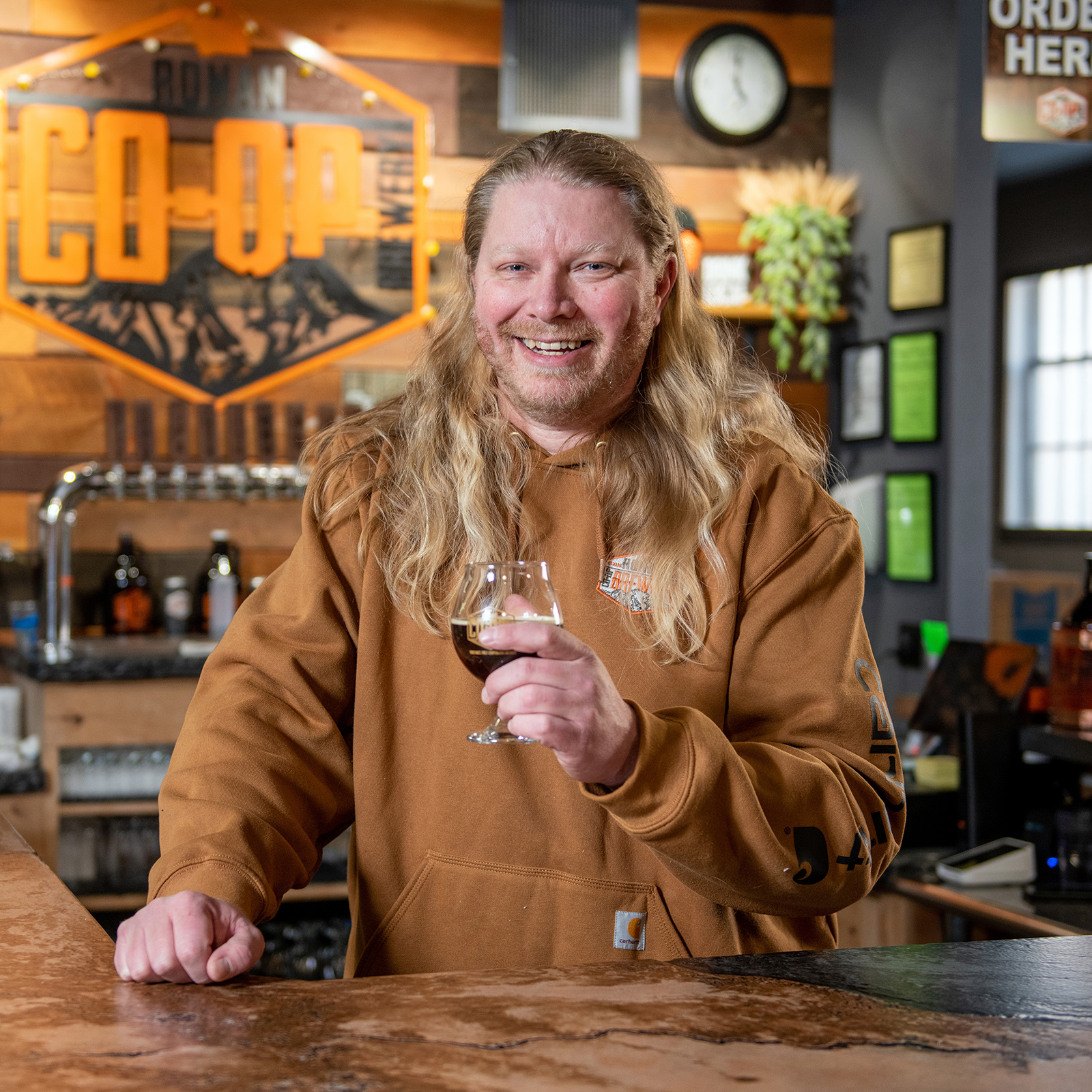Fully encompassing a small tasting glass in his hands, Steve Lozar warms a dram of Mud Lake Dunkles Bock slightly, waking the toasty-rich overtones in the aroma and flavor.
In a region where pale ales and IPAs dominate as popular preferences, for the residents of Ronan – who proudly pull up a stool at their downtown cooperative brewery (the first in the state) – they keep requesting the same thing: more German-style lagers.
“Brewing history of Montana says these little places, in the 1800s, started out with lagers,” said Lozar, proprietor of the Montana Brewery Museum in Polson. “It’s the Montana tradition. And how wonderful to be able to follow that tradition.”
Outside of Ronan, folks are catching onto the lager obsession happening on Ronan’s Main Street, a few blocks off U.S. Highway 93. The Mud Lake Dunkles Bock won silver at the 2022 North American Beer Awards, Gold at the 2022 Great Falls Brewfest and Best Dark Lager at the 2022 Montana Brewers Fall Rendezvous, where it also brought home Best in Show.
“What you’re looking for (in the Mud Lake) is, it’s all about bread crust,” said Jim Myers, head brewer and general manager of the Ronan Co-op Brewery. “Our Dunkles Bock is a little more, not burnt but, well-done.”
Traditionally brewed in winter and served in the spring, Dunkles Bock originates in the Northern German city of Einbeck. As lager brewing grew in popularity, it emigrated to Bavaria and by the 17th century was being recreated in Munich. “Bock” translates into “ram” or “billy goat” and the beer has become associated with the animal – in logos and advertisements – and its symbol of spring.
One wouldn’t guess that Mud Lake’s final ABV falls between 7.8% and 8%, depending on the final attenuation. On the palate, “it’s comforting the whole way,” Myers said. “Smooth, soft and approachable. It’s a big beer, but it doesn’t taste like it.”
A Dunkles Bock is all about the malt. For the Mud Lake, Munich malts provide a dark fruitiness – supporting the overall bread crust, slight caramel and toasty-ness – while melanoidin malts add depth and richness that are hallmarks in German-style beers. Locally grown Saaz hops – one of the four Noble hops – give an herbal, spicy feel, contributing very little to bitterness and none to the aroma. In all his German lagers, Myers pays strict attention to the Reinheitsgebot, or beer purity law.
Myers sweats all the details that go into his beers. But he doesn’t do it alone.
“I have a lot of help from one of our board members, Bob Hall,” Myers said. “I’ll research a recipe and Bob fine-tunes it. A lot of the quality here is a credit to him and the time he’s spent teaching.”
That’s the idea of a community supporting a brewery that, in return, is trying to revitalize the community. It’s palatable in atmosphere, and in the beers. It’s also about cooperation, trust in their brewer and a willingness to try new things. A dark beer like Mud Lake, on paper, should weigh one down. Instead, it’s uplifting and familiar.
“It’s very friendly,” said Lozar, pouring another taste of the young Mud Lake from a plastic measuring cup. “It’s just very friendly. This would be good around the card table with the family.”
Where to find it: Mud Lake Dunkles Bock can be found on tap at the Ronan Co-Op Brewery, 23 4th Ave. SW (side door of 400 Main St.) in downtown Ronan. For more information about the brewery and what they have on tap, visit www.ronancoopbrewery.com or call (406) 676 – HOPS.
Mud Lake
Style: Dunkles Bock
ABV: 7.8% – 8%
Malts: Majority Munich, Pilsner, Carafa, Melanoidin
Hops: Czech Saaz
Yeast: German Lager
Appearance: Dark mahogany with garnet highlights. Good clarity despite the dark color.
Description: Rich maltiness dominated by toasty-rich bread crust. Well-attenuated and clean. A very slight dark fruit character.
Pub Talk
Glossary: Reinheitsgebot, also known as the “purity law,” is said to be the oldest, still-enforced food regulation in the world. It was ordered by Duke Wilhelm IV of Bavaria in the year 1516. The Purity law required that “nothing other than barley, hops, and water” be used to produce beer.
Melanoidins are compounds created during the Maillard reaction during the malting process. Melanoidins are a fusion between sugars and amino acids and have a strong malty flavor. Other flavors such as honey, biscuit, caramel, toffee-like, bread-like, coffee-like and roasted-like are also associated with melanoidins. The melanoidin byproduct is a true hallmark of classic German-style lagers.
Quote of the day: “Usually when I drink, I’m either alone or with somebody. That’s what my dad used to say.” – Steve Lozar
